| Eleanor Alice Burford Hibbert | Home | Jean Plaidy Titles |
| Norman Series | Plantagenet Series | Tudor Series | Stuart Series | Georgian Series | Queen Victoria Series | Queens of England Series | Trilogies, Italy, France and Spain | Other Titles |
| Queen Victoria Series |
 |
Captive of Kensington Palace Vol. 1
January 1972, Robert Hale
Young Princess Victoria was never allowed to be alone. She was always protected from political intrigue and royal scandal - a virtual prisoner of her ambitious mother and her scheming lover.
It didn't take long for Victoria to become aware of the sinister conflicts surrounding her. There were those who were obsessed with usurping her future by either violence or marriage. And there were those who were determined she would never take the throne.
But no one could deny the glorious destiny that awaited her...
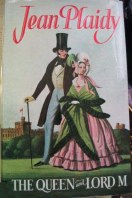
Queen and Lord M Vol. 2
January 1973, Robert Hale
Early on the morning of the 20th June in the year 1837, the archbishop of Canterbury and Lord Chamberlain came to the palace of Kensington to tell an eighteen-year-old girl that she was Queen of England. The Victorian age had begun.
Young, determined to dedicate herself to her country, deeply and demonstratively affectionate by nature, the Queen immediately succumbed to the worldly charm of Lord Melbourne, her Prime Minister.
This is a novel of the first years of the Queen's reign before her marriage to the Prince Consort. The innocent young girl found that she was at the heart of Palace feuds, intrigues and scandals which were to oust her from public favor, and the charming Queen whose youth and innocence had so appealed to the people became the villainess of the Flora Hastings scandal, the despot of the Bedchamber Plot and the subject of speculation concerning her relationship with her Prime Minister.
There was conflict between the Queen and her mother, the flamboyant Duchess of Kent, whose name was linked with that of Sir John Conroy whom Victoria detested; and of another kind with Sir Robert Peel who became victim of the Queen's spite; and there was the aging Duke of Wellington who incurred her anger.
The scene is dominated by the imperious, hot-tempered Queen, unswervingly loyal to those whom she loves as her dear 'Lord M'. And there is Melbourne himself, the aging politician and worldly cynic, the Prime Minister with the stormy past. The publicly-conducted intrigue between his mad wife, Lady Caroline Lamb, and the scandalous Lord Bryon, though over long before the Queen's Accession, reverberated through the years; yet in spite of being cited as co-respondant in two divorce cases, he retained his position as Prime Minister and became a partner in a romantic relationship with the young Victoria.
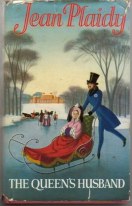
Queen's Husband Vol. 3
September 1973, Robert Hale
From the time they were in their cradles Victoria and Albert were destined for each other; but when Victoria came to the throne and became devoted to her Prime Minister, Lord Melbourne, she had no wish for marriage - until she saw Albert.
Albert, as the younger son of a minor German Duke, was necessarily ambitious and aware of what marriage with the Queen of England could mean; and when Victoria immediately fell in love with him, he believed his future was secure. But he did not know the Queen's nature and that beneath that clinging femininity was a will of iron. Wholeheartedly affectionate, impulsive, demonstrative, loyal and possessed of a notoriously hot temper, loving to gossip and dance till the early hours of morning, Victoria's character was in complete opposition to that of her serious husband who liked to rise at dawn and retire early.
It was inevitable that during the first years the relationship was stormy. The Queen was in perpetual revolt against any encroachment on her position as well as the constant pregnancies she had to endure. Albert's battle was for supremacy and he was determined that Victoria should regard herself as his wife first, as Queen second.
These were significant years when British history was shaped by statesmen such as Sir Robert Peel and Lord Palmerston and by great events such as the Crimean War and the Indian Mutiny; and more than once the Queen came near to death through assassination.
Yet her life was dominated by her husband and family life. There was naughty Bertie, brilliant Vicky, placid Alice, delicate Leopald and five other children of the marriage. But for the Queen there was one who meant more than the rest of the world put together - Albert.
So the Victorian age was created and the power behind the throne was the Queen's Husband.
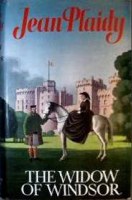
Widow of Windsor Vol. 4
January 1974, Robert Hale
Albert was dead and the Queen, stricken with grief, prepared to spend the rest of her life mourning. Her Government and her family sought to bring her out of seclusion but she was determined to remain the Widow of Windsor.
The years which followed were some of the most momentous in British history, some of the Queen's ministers the most famous. There was the great Palmerston who managed to keep a mocking ascendancy over her; Mr. Gladstone, Grand Old Man and People's William, who prowled the streets at night in an attempt to lead prostitutes back to a life of respectability, and who was no favorite of the Queen, unlike the witty Disraeli, who charmed her completely.
She was surrounded by the colorful members of her family - sons, daughters, their wives and husbands, her grandchildren. There was the censorious Vicky, Crown Princess of Prussia and Empress-to-be who suffered great domestic tragedy; Louise who married outside royalty; Lenchen and baby Beatrice; there was Alfred whose amorous adventures caused his mother such concern and Leopold whose ill health was an even greater anxiety; there was Arthur who had inherited his father's goodness; and above all there was Bertie, Prince of Wales and heir to the throne. Suppressed in his father's lifetime he was determined to pursue pleasure for the rest of his life and his passions were racing and fascinating women. His adventures twice brought him into the witness box to give evidence in famous trials which created the scandals of the decade, and brought sorrow and humiliation to Alexandra, whose happy childhood in the Yellow Palace had ill prepared her for life with the gay and charming philanderer whom she discovered her husband to be.
But Queen Victoria at Windsor, Balmoral, Osborne or Buckingham Palace cannot fail to dominate the scene. Her relationship with John Brown, the rough Highlander, gave rise to speculation, but she was impervious to scandal. All the fascinating characters of an unforgettable age rotate about her like planets round the sun; and she remained the great Queen until the moment of her death and the passing of an era.
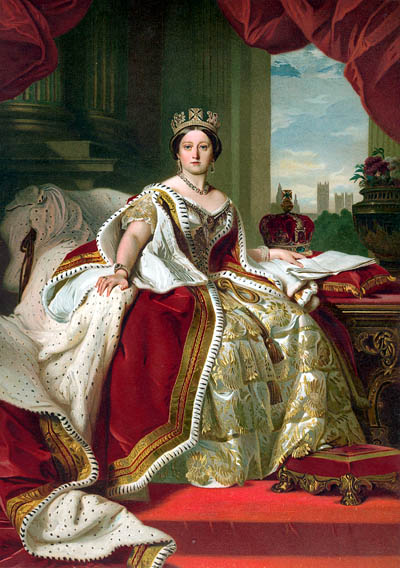
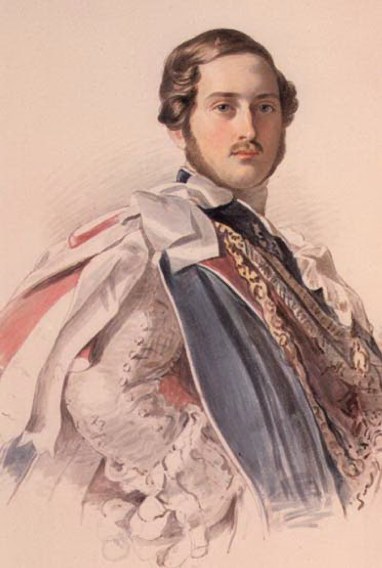
Queen Victoria and her Husband Albert